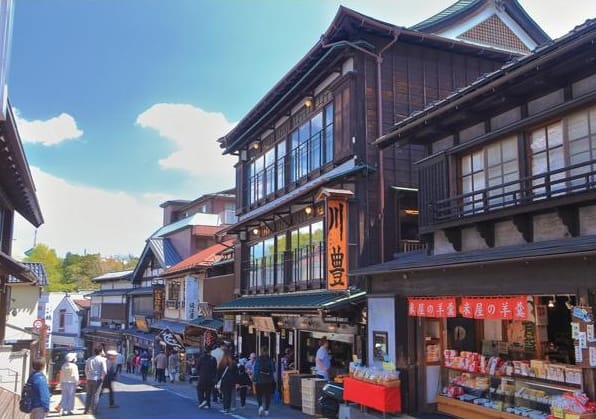Need advice on getting to Okinawa Island and other recommendations?
Discover Okinawa: a tropical paradise with stunning beaches, vibrant culture, and local traditions. Explore islands, savor cuisine, and experience warm hospitality.

I want to visit Okinawa Island. How do I get there from Tokyo, and do you have any other tips or recommendations?
If you’re flying from Tokyo, the most straightforward way is to catch a plane from Haneda Airport straight to Naha Airport in Okinawa. That’s what most people do, including me. The flight takes about three hours and costs around ¥15,000–¥30,000 (roughly $110–$220 USD) one way, depending on the season and airline. It’s pretty convenient and the main gateway to Okinawa’s main island.
Now, Okinawa’s main island is fantastic, but honestly, what captured my heart more were the smaller islands scattered around it. Each one has its own vibe and charm, and if you have the time, hopping around those islands can give you a very authentic and laid-back experience that’s quite different from the usual tourist spots. From my travels across all 47 prefectures, Okinawa stands out as my favorite—not just for its natural beauty but because of its unique culture, warm people, and delicious food.
One thing I always enjoy is listening to Okinawan music, especially when driving or relaxing by the sea. There’s a singer named BEGEN from Okinawa whose mellow tunes perfectly fit the island’s atmosphere. It feels like you’re in a paradise, even if you’re just chilling on the beach.
What if I want to explore the smaller islands around Okinawa? How do I get there and what should I expect?
Great question! To reach the outer islands like Miyako, Ishigaki, or Zamami, you’ll usually take a domestic flight or ferry from the main island. For example, flights from Naha to Ishigaki take about 40 minutes and cost around ¥7,000–¥12,000 ($50–$90 USD) one way. Ferries to closer islands like Zamami are affordable—around ¥2,000–¥3,000 ($15–$22 USD)—and the ride can be anywhere from 30 minutes to a couple of hours depending on the route.
The vibe on these islands is slower and more local. Japanese people often visit these islands for a quiet getaway or to enjoy snorkeling and diving, which are world-class here. Unlike typical touristy beach resorts, you’ll find small fishing villages, local markets, and friendly faces. It’s a chance to see how Okinawans live outside the main city areas.
How about food in Okinawa? Any must-try local dishes that Japanese people love but tourists might miss?
Definitely! Okinawan cuisine is distinct from the rest of Japan, partly because of its history and subtropical climate. While tourists flock to try Okinawa soba (a thick wheat noodle soup), locals also savor dishes like goya champuru (bitter melon stir-fry with tofu and pork), rafute (braised pork belly), and umi-budo (sea grapes, a kind of seaweed that’s crunchy and salty).
When I’m there, I like to visit small local eateries or even markets where families shop daily. You’ll find a lot of fresh seafood and unique vegetables. And don’t overlook the local sweets like sata andagi (Okinawan doughnuts)—they’re simple but really tasty. These foods tell the story of Okinawa’s culture and people in a way big restaurants can’t.
Any tips for getting around Okinawa once I arrive? Is renting a car necessary?
If you want to explore beyond the main city of Naha, renting a car is almost essential. Public transportation exists but can be limited, especially if you want to visit beaches, small towns, or drive along the coast. Renting a car is reasonably priced—about ¥4,000–¥6,000 per day ($30–$45 USD)—and gives you the freedom to discover hidden spots and enjoy the scenery at your own pace.
That said, in Naha itself, you can get around by bus or on foot fairly easily. Japanese people living in Okinawa often have cars, especially if they live outside the city, because the island is quite spread out. Driving there is relaxed, with scenic coastal roads that are perfect for a slow, peaceful drive while listening to Okinawan music.
Can you recommend any cultural activities or experiences unique to Okinawa that visitors usually don’t notice?
One thing many tourists miss is the deep connection Okinawa has to its traditional music and dance. Locals often gather for “Eisa” dance festivals, especially in summer, which are vibrant and full of energy. While you might catch some performances at festivals or special events, the real experience is seeing how Okinawan people keep these traditions alive in their daily lives—sometimes just jamming with sanshin (a three-stringed instrument) at a local bar or community center.
Also, Okinawans have a strong sense of community and respect for nature. Visiting a local market, chatting with vendors, or even just spending time at a quiet beach can give you a glimpse into their lifestyle—slow, connected, and joyful. It’s not about rushing from one sightseeing spot to another but about savoring moments and the unique Okinawan spirit.
Okinawa truly feels like a world of its own within Japan. For a visitor, blending the usual sightseeing with these local experiences can reveal a side of Japan that’s rarely seen but deeply rewarding. Whether it’s the food, the music, or the pace of life, Okinawa invites you to slow down and enjoy things in a way that leaves a lasting impression.



Comments ()